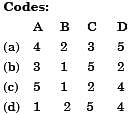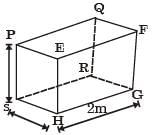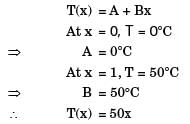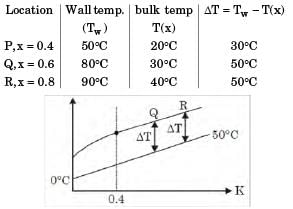Past Year Questions: Free And Forced Convection - Mechanical Engineering MCQ
13 Questions MCQ Test Additional Study Material for Mechanical Engineering - Past Year Questions: Free And Forced Convection
Match List-I with List-ll and select the correct answer using the code given below the lists:
List-I
A. Grashof number
B. Schmidt number
C. Weber number
D. Fourier number
List-II
1. Mass diffusion
2. Transient heat conduction
3. Free convection
4. Forced convection
5. Surface tension
6. Radiation

[1996]
List-I
A. Grashof number
B. Schmidt number
C. Weber number
D. Fourier number
1. Mass diffusion
2. Transient heat conduction
3. Free convection
4. Forced convection
5. Surface tension
6. Radiation

The ratio of momentum diffusivity (v) to thermal diffusivity (α), is called
[2015]
| 1 Crore+ students have signed up on EduRev. Have you? Download the App |
Grashof number signifies the ratio of
[2016]
In pool boiling the highest HTC occurs in
[1990]
Heat transfer coefficients for free convection in gases, forced convection in gases and vapours, and for boiling water lie, respectively, in the range of
[1998]
For the three-dimensional object shown in the figure below, five faces are insulated. The sixth face (PQRS), which is not insulated, interacts thermally with the ambient, with a convective heat transfer coefficient of 10W/m2K. The ambient temperature is 30°C. Heat is uniformly generated inside the object at the rate of 100 W/m3. Assuming the face PQRS to be at uniform temperature, its steady state temperature is

[2000]
Water (specifie heat, c = 4.18 kJ/kgK) enters a pipe at a rate 0.01 kg/s and a temperature of 20°C. The pipe, of diameter 50 mm and length 3 m, is subjected to a wall heat flux q"w in W/m2.
If q"w = 2500x, where x is in m and in the direction of flow (x = 0 at the inlet), the bulk means temperature of the water leaving the pipe in °C is
[2013]
Water (specifie heat, c = 4.18 kJ/kgK) enters a pipe at a rate 0.01 kg/s and a temperature of 20°C. The pipe, of diameter 50 mm and length 3 m, is subjected to a wall heat flux q"w in W/m2.
If q"w = 5000 and the convection heat transfer coefficient at the pipe outlet is 1000 W/m2K, the temperature in °C at the inner surface of the pipe at the outlet is
[2013]
For laminar forced convection over a flat plate, if the free stream velocity increases by a factor of 2, the average heat transfer coefficient
[2014]
The properties of mercury at 300 K are: Density = 13529 kg/m3, cp = 0.1393 kJ/kgK, dynamic viscosity = 0.1523 × 10–2 Ns/m2 and thermal conductivity = 8.540 W/mK. The Prandtl number of the mercury at 300 K is
[2002]
In the laminar flow of air (Pr = 0.7) over a heated plate, if δ and δT denote, respectively, the hydrodynamic and thermal boundary layer thicknesses, then
[2015]
For a hydrodynamically and thermally fully developed laminar flow through a circular pipe of constant cross-section. The Nusselt number at constant wall heat flux (Nuq) and that at constant wall temperature (NuT) are related as
[2019]
The wall of a constant diameter pipe of length 1 m is heated uniformly with flux q” by wrapping a heater coil around it. The flow at the inlet to the pipe is hydrodynamically fully developed. The fluid is incompressible and the flow is assumed to be laminar and steady all through the pipe.
The bulk temperature of the fluid is equal to 0°C at the in let and 50°C at the exit. The wal l temperatures are measured at three locations, P, Q an d R as shown in the figure. The flow thermally develops after some distance from the inlet. The following measurements are made :

Among the locations P, Q and R, the flow is thermally at :
[2019]
|
1 videos|30 docs|57 tests
|
|
1 videos|30 docs|57 tests
|

































